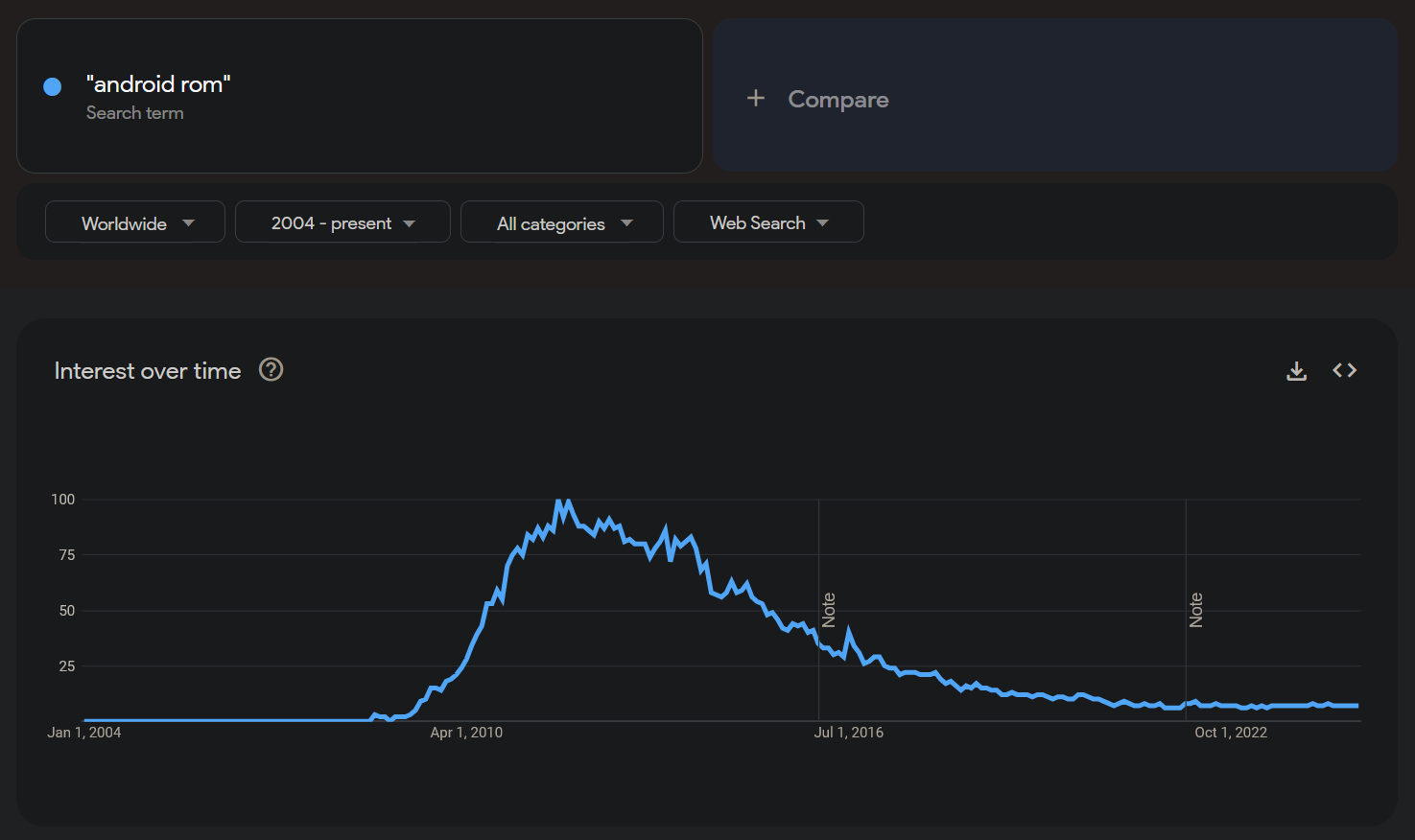So recently I’ve been seeing the trend where Android OEMs such as Google, Samsung, etc. have been extending their software release times up to like five, six, and seven years after device release. Clearly, phone hardware has gotten to the point where it can support software for that long, and computers have been in that stage for a very long time. From what I can tell, the only OEM that does this currently might be Fairphone.
Edit: The battery is the thing that goes the fastest so manufacturers could just offer new batteries and that would solve a lot of the problem.
I mean it gets the customers status symbols and the manufacturers money. As long as those phones later end up on the used market it’s a win-win.
I know a shocking amount of people who will buy the new iPhone every single year, so from Apple’s POV why would they ever not release a ‘new’ phone.
Mark Gurman, who’s normally dead on the money when it comes to Apple, thinks they’re unlikely to keep up annual releases (though I should note the linked article suggests the new iPhone model schedule is unlikely to change for now).
They ought to release a new phone every six months so morons keep buying them and my stocks continue to soar.
Retail stores rarely carry a phone older than two years, as long as they push new phones every year, people will be buying those phones.
OEM’s could have like 3 battery types, mass produce these 3 and offer battery replacement for maybe 30 bucks or less? OEM’s could have like 3 phone designs and update the internals, making each screen replacement maybe 50 bucks or less? Instead each has unique screen, motherboard, subboard and battery combo. My 10y/o nokia has the same battery as a new one, they cost like 5 bucks each.
Needless to say I love the EU for bringing back user serviceable batteries, that’s a great start.
OEMs only recently started offering 5+ years of security fixes. Two years was common until just 6 years ago. Apple got a lot of crap for not supporting older models but the truth is they supported longer than anyone else and only cut support when the hardware literally couldn’t take it. Yet everyone ignored that most android makers might not even release a single update much less more than the two years worth needed to cover a phone for a two year contract.
I don’t like saying that because I can’t stand apple devices. But it’s what happened. Then the EU started getting involved. They hated all this ewaste caused by people constantly upgrading. IT security people were speaking up too because phones were a complete risk with people using them for work but not getting updates that stopped them from being owned. It was getting bad for OEMs from multiple angles and they needed to act before the US government made them. And all those factors are the only reasons we are just now seeing all phones come with 5+ year plans.
As right to repair laws get integrated into new releases we will actually be able to take advantage of these 5+ year plans because we will be able to replace the batteries that are normally useless after three years.
I wish most phones had a battery saver option that would stop charge at 80% unless you manually overrode it each and every time you wanted to go over. This would dramatically cut down on the need to replace batteries.
But here is the rub. Even if you convince the majority logically that their phone is still good at year three they are going to upgrade at year two when the phone is paid off. The people that use phones as an identity and brand marker are still going to upgrade as fast as new devices come out.
And devices are going to continue to come out yearly. If you don’t ship a new flagship product each year then shareholders will revolt. There must always be something new for the customer. Technology moves fast. If you are an OEM not releasing then you are an OEM that isn’t keeping up.
All these forces of market, psychology, legal and repairability and more fight each other to create a situation where most people will upgrade in two years or less. Only a small portion of people will ever try to get 5+ years out of a device. Even the population trying to get 3 years will be two standard deviations out of the majority. Even if the battery is replaceable and the security patches keep coming.
By the way, I am not sure if it is a standard function of lineage OS, a standard function of Android 13 and above, or something with lineage OS on my specific OnePlus device. But I am able to limit my charge to 80% and it will never charge above that unless I turn it off. I bought the phone brand new and have been using that function since day one and it works extremely well.
Just don’t buy one every year? We get new car models every year based on improvements in technology why not phones? You don’t have to buy one every year, nobody is forcing you
I’m still using my Galaxy S8 with only one problem: Verizon’s voicemail app won’t run on something this old. Every other app is fine. It figures that the only app that encourages me to upgrade is from the phone company.
The whole idea of making phones disposable was stupid from the get go. I’d say that most mid-tier phones from 2017 should be perfectly serviceable for every stupid app being widely used nowadays. High end phones from 7, 8 years ago are still perfectly fine
I mean, even power gamers barely need all the power that the high end phones offer, because mobile games always aim for the low end, with few exceptions.
That fucking Apple started with the stupid shit of gluing the phone, and every other fucking company copied that shit, really pisses me off. 2015 phones could have their backs opened and the battery changed if needed, no need for special tools.
Phones are unlikely to become open, as in owners can actually fuck around with the software and hardware as they’d like, anytime soon. A few try that, but it’s unlikely to become mainstream because there’s no market pressure
Yeah, up until about 2 weeks ago I was still using a Pixel 4. It was 5 years old but never felt slow at all.
Still rocking the Pixel3. Waiting on appleSE refresh
I just went with the $100 Motorola stylus (it has a built in stylus!) and just pay $4/month with 0% interest so I’m paying much less than $100 over two years. These cheaper phones usually hold up better to abuse than more expensive phones. I had the pixle 5a and the screen died just after two years (a known issue) screens for it are more expensive than $100 right now.
4*24=96, you’re probably paying exactly $100 over two years.
Not a huge savings, but still.

another way of looking at it.

What’s the NPV of 24 monthly $4 payments assuming a 4% annual rate of return?
At least $3.50
Clearly, phone hardware has gotten to the point where it can support software for that long, and computers have been in that stage for a very long time
I’m not sure what you mean by this. Software supports hardware, not the other way around. You could run the latest android on any powerful enough hardware. The only limit is the porting effort
For example, the samsung galaxy s4 was released in 2013 with android 4 and the latest official version for it is android 5
The lineageos folks however have been - until recently - maintaining android 11 (and previous versions) for it, afaik fairly easly. The only reason they don’t have newer android versions for the s4 is that android 12 depends on a kernel feature which samsung’s ancient official version doesn’t have. The lineageos folks could in theory reverse engineer the proprietary drivers and maintain a more up to date kernel for the s4, but they simply don’t have the manpower
Samsung tho? They easily could support modern android versions on this 2013 phone, but they won’t for the same reason they made batteries non-removable: they don’t want you to use old hardware, they want you to buy a new phone every year
I typed this on my 2018 phone (oneplus 6) running android 14 (the latest official version is android 11)
Manufacturers frustrate os replacement on purpose. The vast majority of phones cannot have their os changed by the user. Lineageos is a niche effort for ultraniche phones.
True. It’s kinda crazy that nowadays most phones don’t have an official way to unlock the bootloader
I discovered that after buying 60 of my favourite phone, the 2018 moto z3. I figured I could mod it endlessly and use it for all my project. Nope, bootloader locked and I can’t even root the damned thing !
eyo, another oneplus 6 user! It’s nice having a headphone jack on a phone. I run PostmarketOS on mine for virtually infinite software updates.
Nice. I actually installed postmarketOS last year for fun. How is it nowadays? Last time I tried it, the camera didn’t work, I didn’t manage to set up Waydroid, most non-GTK apps didn’t adapt well to a phone, and afaik there were no push notifications (which was a big deal for me because having an app always running in the background made the battery drain much faster). Also what interface do you use? I used Gnome with mobile patches
Actually, apparently the pixel3a now has both front and rear camera support, though still in the very early stages. I also like how the pixel3a has a plastic back instead of the glass on the OP6 so it does not shatter if you drop it.
I also like how the pixel3a has a plastic back instead of the glass on the OP6 so it does not shatter if you drop it.
Yeah, same. That’s one of the 2 main things I don’t like about the OP6 (the other being the non-removable battery). Putting a protective case on it solves the problem though
The OP6 is already so big that it’s quite the brick with a case. I’m hoping that the people working at Fairphone can get PostmarketOS running reasonably well on their devices considering PostmarketOS aligns pretty well with their goals.
Not much has changed since then. I use Phosh since as beautiful as gnome mobile is, it lacks some functionality.
How does the postmarket OS work? Is it pure Linux? Does it support android apps?
Yes, it pure linux and is based on Alpine linux often used in Docker Containers. Many supported devices run an upstream kernel instead of the old manufacturer one that comes with android. Android apps can work though waydroid, though I have not used apps that require google play services, though I did get that working on my laptoo.
It’s been time for like 10 years
We passed that when iPhone x hit
I have never bought a new phone every year…
I tend to use mine until it’s EOL or until the battery is unusable.
So far I normally get 4-5 years out of my phones.
I usually buy high end devices, that tend to last 4-6 years. I usually choose by camera, battery, and charging speed. I’m currently on a 4 year old Xiaomi that has an great camera, the battery still last over a day, charges 5000 mAh in slightly over an hour. I have never broken a screen or lost a phone in over 30 years. I buy the latest and greatest to make sure my investment lasts.
I tend to buy the last years iPhone when I get a new phone, it is cheaper and has less bugs.
I am still on the iPhone 12 mini
The “problem” exists on purpose. You can’t swap the os on your phone. You can’t repair it You can’t inspect how much it spies on you Your phone hates you.
Well, I have to disagree with being able to swap the OS on your phone as I have definitely been doing that for a very long time with the custom ROM scene. And in fact, I am on lineage OS right now with no Google Play Services so you can stop a lot of that crap.
I know there are rare exception, but for most phones and most people that simply is not an option.
That used to be the case but the practice was dying by 2014 and completely flatlined after 2020
Without drastic legislative changes, it will become entirely impossible and soon

I very seriously doubt it would become entirely impossible because if it became entirely impossible on any big brand name to do so then somebody would launch a brand that specifically allowed for that. Fairphone is somewhat that way already.
As the total number user of alternative phone OS shrinks, the development of those OS becomes less and less viable. But yes, I would see phones with mid tier specs from 3 years ago charging flagship prices to fill that the spot before it becomes entirely non-viable. I think google does need there to be the appearance of competition so they don’t get hit with monopoly lawsuits, but it only needs to exist, other than that they want it as fringe and clunky as possible and I think that’s where we’re headed.
With things like GrapheneOS its literally never been easier. Plug your phone into the computer, go to their website, and press a couple of buttons and read a couple of instructions. And you now have an alternative operating system on your phone.
Edit: hell, simplifiedprivacy.com will literally do it for you and send you the device.
They could have always supported software for that long. They simply refused to.
There is no benefit to slowing the release cycle. All of the research gets done either way, all of the supply chain modifications get made either way, and as an individual you have no need to replace your phone every year. A multi-year release cycle does very little but screw over people who need a new phone during the wrong point in the release cycle, while also substantially complicating the supply chains by making demand much spikier.
Compare with the yearly release cycle on cars.
That is kind of my thought. Phone technology doesn’t change drastically within two years and a car does not change drastically within two years.
But people are constantly buying millions of both, so makes sense to have small yearly updates and major revisions every few years.
Which is basically how both phones and cars are developed now.
Typically they’ll do a major revamp or a clean sheet design of a model, so the 2005 Hoyota Civrolla is a completely new car. The 2006 Civrolla will be available in a few different paint colors and 2 different wheel options. The 2007 model has a different grille so it looks even more like it’s smiling while wearing a retainer. The 2008 model has a different washer bottle assembly and the battery tray is now molded plastic instead of stamped steel. The 2008 model is available with a 2.7 liter engine in addition to the 3.6. 2009 they eliminate the base model trim so now they all have power mirrors and cruise control. The 2010 models with CD players can now play mp3s off the CD. 2011 they only sell the 6-speed manual with the 2.7 liter engine, the V6 is only available with an automatic. 2012 they do a major style update, same chassis and running gear, different bodywork and the interior shares more components with the Elamry.
People apparently use installment plans for phone purchases these days, along with a downstream used market, so it’s actually a really apt analogy.
Conservation wise there is a very big reason to slow down the release cycle
No, there isn’t. People who are buying new phones every year are trading them in, and they’re going to other people who are more price conscious.
Manufacturing several year old tech results in brand new hardware with a shorter life cycle. You’re not going to get 5 or 10 years of updates on a phone that was 5 years behind tech advancement when you bought it.
The people chasing novelty would do so by jumping manufacturers instead, so you don’t change their behavior at all.
And like you said, sometimes you need to replace a phone.
Maybe it was lost, or destroyed.
Good points
Edit: Though there was the point in the early to mid-2010s where hardware was improving so rapidly that it would have been infeasible to not replace it as soon as possible.
Manufactures are not going to offer replacement part, its more valuable for them to make you buy a new phone than replace a part yourself
They will with batteries since the EU is forcing the issue starting in 2026.








